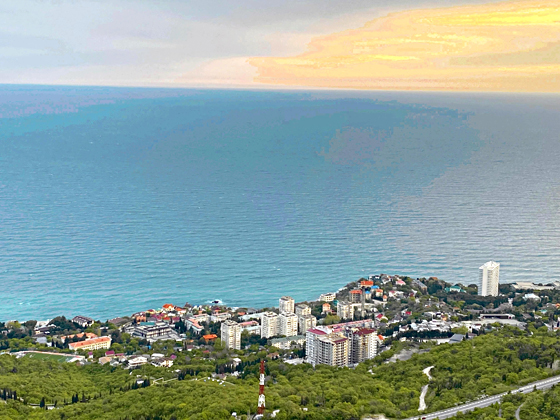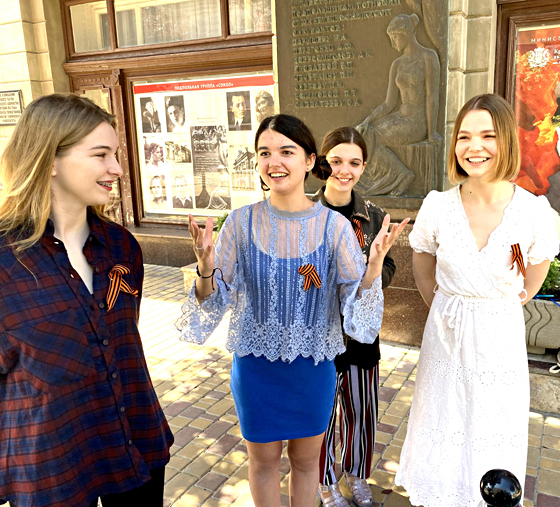We’re pleased to crosspost an excerpt of this piece co-authored by our board member Rick Sterling and Dan Kovalik. This is the second part of a three-part series on their recent trip to Russia. Read part one here. This article was first featured on AntiWar.com
At the end of April of this year, the two of us ventured together to Russia. We went with the purpose of fact-finding and also to make a point that we do not believe that Russia should be isolated from the world through sanctions and travel bans.

In May of this year, we took the long, 27-hour train ride from Moscow to Crimea to see how life is there and what the sentiment of the people are as the US and Ukraine sharpen their threats to “recapture” this peninsula from Russia. And, while we were there, these threats were backed by a series of terrorist drone attacks in Crimea which, while doing little serious damage, signaled an escalation in the US/Ukrainian assault on Crimea.
Despite such threats and attacks, what we found in this historic peninsula on the Black Sea was a beautiful, almost idyllic place with a bustling economy and a general sense of prosperity and hopefulness. We also found a people who seem quite content to remain a part of Russia just as Crimea has been, except for a brief interval, since 1783.
During our trip, we visited the three major cities of Simferopol, Sevastopol, and Yalta.
The Capital Simferopol
Simferopol is an inland city with about half a million residents. There are universities as well as Crimea’s parliament and industry. When we visited it, most people were enjoying the holidays. We saw multiple groups of teenagers singing patriotic songs on the street and in front of memorials. It is difficult to imagine something comparable happening in the US or Canada. The difference may be partly the result of education but it also shows the different consciousness and experience. Approximately 1 in every seven citizens died in WW2 so every family in the Soviet Union lost family members. The Nazi invasion and occupation were horrible, real and impacted every one.

In Simferopol we met two women, Larisa and Irina, who described in detail what happened in early 2014. Confrontations started when a small group of ultra-nationalists tried to demolish the statue of Lenin in the capital center. Seeing this as an attack on their Soviet and Russian heritage, a much larger group gathered and stopped them.
Then, three police who were residents of Crimea were killed in Maidan protests. As their corpses were brought home, there was increasing fear that the violence in Kiev could come to Crimea. Volunteers formed self-defense battalions.
Hundreds of Crimeans went to Kiev on chartered buses to peacefully protest against the Maidan chaos. The violence climaxed with the killing of police and protesters by snipers located in opposition controlled buildings on February 20. The Crimeans realized that peaceful protests were hopeless and departed back to Crimea on the chartered buses. At the town of Korsun, the convoy of eight buses was stopped by a gang from the Neo-Nazi “Right Sector.” Dozens people were beaten and seven Crimeans killed.
On February 22 the elected Ukraine government was overthrown. On its first day in power, the coup government enacted legislation to remove Russian as a state language. These events provoked shock, fear and the urgent desire to re-unify with Russia. According to Larisa and Irina, there was a huge popular demand to hold a referendum to secede from Ukraine.
The Crimean parliament agreed and first proposed to have the referendum in May. The popular demand was to have it much sooner. Larisa says that on February 27 the Russian flag was flying over parliament. She does not know how, but says, “It was like a miracle.” People sensed then that Russia might accept Crimea. Suddenly there were Russian flags all over the city.
There was still the fear of violence. Soldiers in green uniforms without insignia, known as the “polite men” appeared at key locations such as the airport and parliament. It is generally understood these were Russian special forces. They were heartily welcomed by nearly all and events proceeded without violence. Larisa laughed at western journalists who used the photograph of a WW2 tank in a park, to suggest that Russian tanks were in the capital.

There was no involvement by Russia in the referendum; it was organized and carried out by the traditional election council on March 16. The results were decisive: with 83% voting, 97% voted to rejoin Russia.
Two days later the Crimean parliament appealed to the Russian Federation. Two days after that the agreement was signed in Moscow. Larisa and Irina say, “Everyone was happy”; they call it “Crimea Spring.”
Continue reading here.
